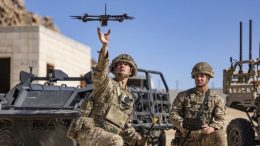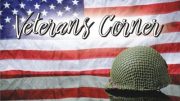Hundreds of military-related items were on display during the Jefferson County Historical Society’s annual military show at the county’s fairgrounds on Saturday.
Mixed among those items was a lot of history, including ties to Venango County.
A display by Franklin resident John Estock included artifacts traced to a pair of prominent county residents – John A. Wiley and Marshall Phipps, both of Franklin.
Wiley was a Civil War veteran who enlisted in the 8th Pennsylvania Reserve Regiment in 1861. After the war, he relocated to Franklin and was employed in the oil industry. In 1871, he joined the National Guard as a private in the Oil City Greys.
By 1876, he was commander of the 16th Infantry Regiment, and in 1886 he was promoted to brigadier general in command of the 2nd Brigade.
Wiley also served as principal of Franklin High School and was mayor of Franklin from 1894-1895.
Phipps was a Franklin attorney, prothonotary and state senator. He served in the National Guard for 15 years.
On July 21, 1906, Colonel Lewis T. Brown, a member of Pennsylvania Gov. Samuel W. Pennypacker’s staff, presented Capt. Phipps’ sword to him during the National Guard’s annual encampment at Gettysburg. At that time, the Gettysburg battlefield was under the jurisdiction of the War Department and used for annual training.
“I collect many things, but – living in Franklin – this really peaked my interest,” said Estock, who has been collecting for the past 40 years.
He acquired Phipps’ sword about 15 years ago from a local antique dealer. The Wiley sword came from the same dealer.
“The National Guard items are not as popular as other items with more glory, but they were the down-to-earth soldiers as the system developed from the Civil War to the Spanish-American War,” said Estock. “The National Guard was called out in World War II, and we still rely on them today.”
“It is nice to come out and talk about it because no one really knows about it,” he said.
Estock noted the Spanish-American War is little known today, but it forged the United States into a major power.
In addition to the local National Guard units, Estock also collects items related to the 7th New York Regiment.
“It was one of the dandy regiments,” he said.











































